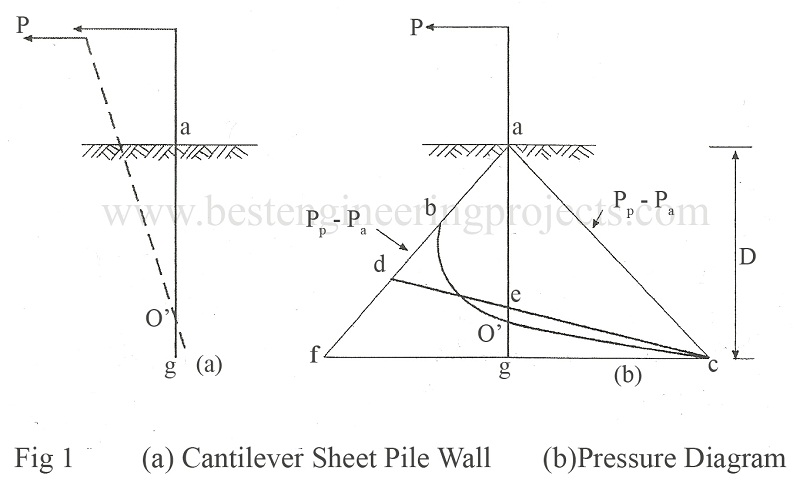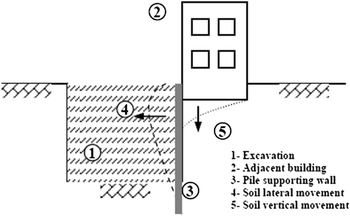This sections examines vertical cantilever walls and the basic design methods used for cantilever wall analysis.
Cantilever sheet pile walls depend for their support on the.
Sheet piles walls are also called bank heads.
In reality both gravity and vertical embedded walls types can be categorized as cantilever if no lateral bracing support is provided by means of tiebacks struts etc.
Cantilever walls are usually used as floodwall or as earth retaining walls with low wall heights 10 to 15 feet or less.
The active pressure tends the wall to move away from the backfill while the passive earth pressure resists the wall movement.
They make plates of concrete timber and.
The depth of sheetpiling walls below thebottom of the excavation are determined by using the difference between the passive and active pressures acting on the wall.
To take into account the friction between the wall and the soil we use friction angle δ φ 2.
Click here to find out the design of cantilever walls.
Please note this value is applied only for passive pressure.
Sheet piles walls types and forces of acting on the bulkhead uses.
They are coming to some forces acting on sheet pile walls.
A sheet pile wall is required to support a 12 excavation.
Because cantilever walls derive their support solely from the foundation soils they may be installed in relatively close proximity but not less than 1 5 times the overall length of the piling to existing structures.
Design of cantilevered wall granular soil introduction.
Cantilever sheet pile walls having no surcharge on the backfill have been studied extensively by various researchers for earth pressures and bending moment 2 3 4 5 6 7 8.
Cantilever sheet piles are used where the height of the soil or water to be retained is smaller than 4 5 m.
Use factor of safety 1 5 for.
Sheet piles are generally thin piles.
What is sheet piles.
The soil is uniform as shown in the figure.









